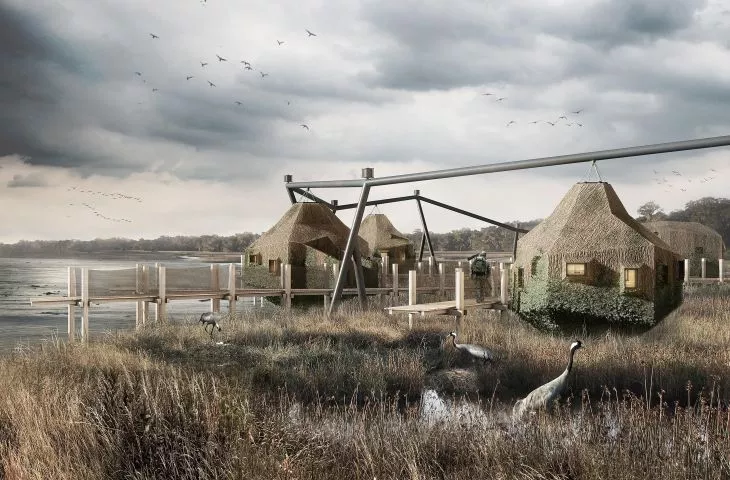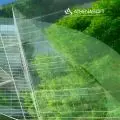respect for nature
Adam Jankowski decided on a spatial composition with an extensive development layout. The individual buildings of the science station were raised above the reeds on stilts to minimize their impact on the environment. The landscaping design is intended to relate its shape to the tree. A free-flowing layout without a clear center is created by piers resembling branches on which the science station objects hang. The layout flexibly adapts to the existing topography of the site, preserving the existing vegetation. Keeping in mind skittish avifauna species, the architect used unevenly distributed, small window openings in the buildings. The limited ability to see into the interior of the units makes it impossible for birds to see human movement in them.
museum and laboratory
© Adam Jankowski
science village
The functional program of the science station consists of six basic types of facilities, which complement each other to form a coherent spatial arrangement. The premise, which resembles a small village, contains three main units: educational, laboratory and administrative. The first contains a multimedia museum where visitors can deepen their knowledge of nature and ecology. The main building for scientists is the laboratory, where samples acquired in the field are studied. The administration building, in turn, houses an archive and a multipurpose room.
accommodation in the nest
The hotel function is fulfilled by the already described nest remiza. Eight repetitive structures, spread out in close proximity to each other, provide accommodation for researchers. Their purpose is complemented by three small buildings housing communal toilets. An element of the semi-open space is a shed with a hearth, which provides a meeting place for station staff.
The premise resembles a small village
© Adam Jankowski




























































